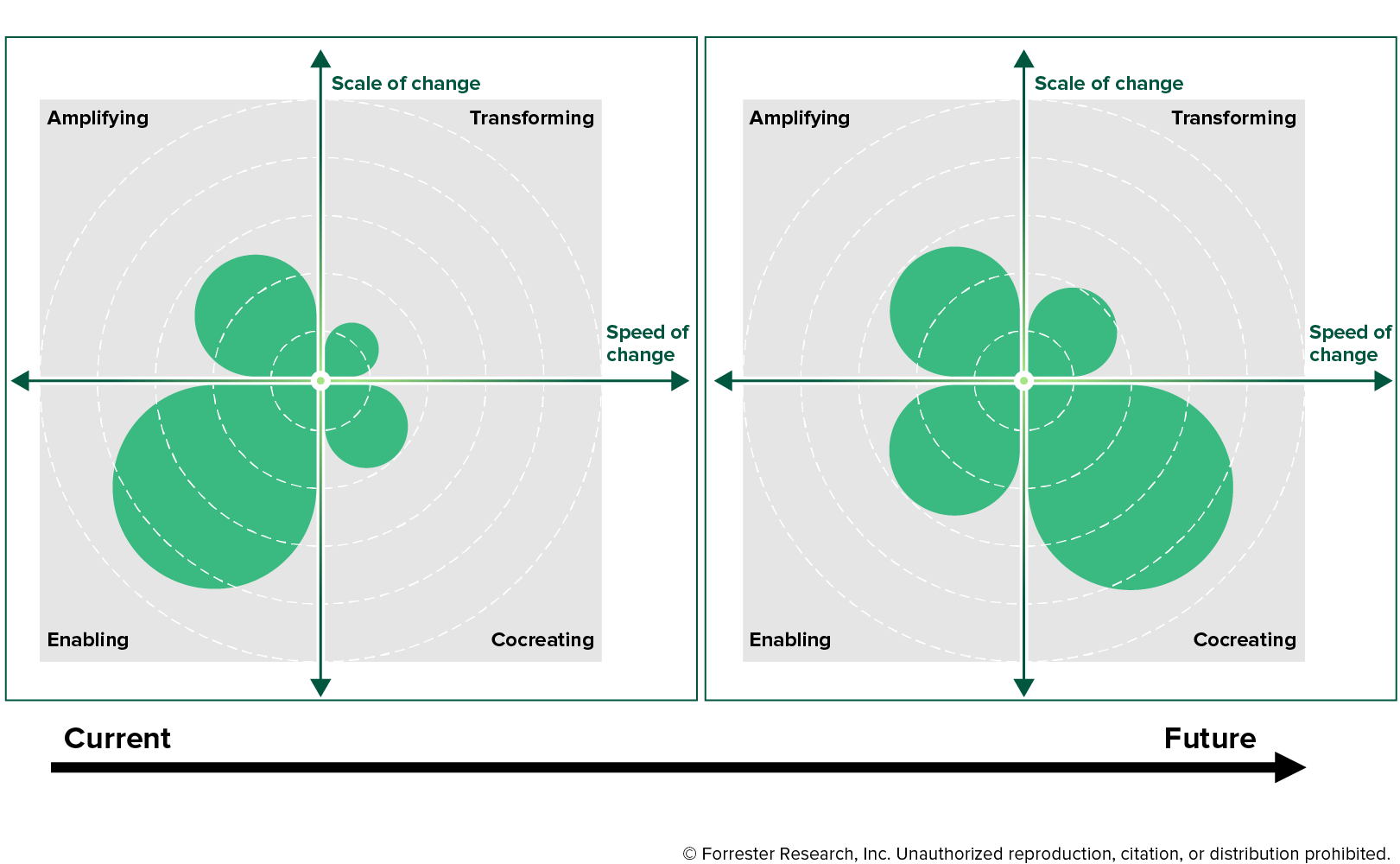High-Performance IT Means One Size Doesn’t Fit All
Technology is critical to an organization’s success. This is obvious enough in industries where technology is fundamentally changing the customer experience. But even in something like paint manufacturing or government agencies, technology is critical — though critical in a different way than verticals experiencing significant tech disruption. To thrive and grow, firms must make a strategic commitment to “high-performance IT,” defined as the pursuit of continuously improving business results through technology.
Forrester’s high-performance IT tech vision recognizes that every organization is unique. Some organizations rely on technology to bring new products to market. Some need to embrace the latest cutting-edge technology and practices to disrupt and transform markets. Others just need to optimize business operations.
High-Performance IT Looks At Scale And Speed Of Business Change
Architecture leaders of course must align technology and practices to their business needs. Do that by considering four IT styles along two axes for speed of change to bring new products to market and scale of change across the organization. Then compare how much emphasis you should place on each for advancing business outcomes compared to today. For example, consider an insurance organization that has been aligning its architecture to optimizing business operations. This may have previously been in line with past business needs. But today the business’s objective is to more rapidly deliver new insurance products embedded in third-party value networks. Enterprise architecture (EA) may need to change its architectural focus for a more rapid speed of change. That points EA to investments better suited for rapid product development beyond the existing app-dev cycle. In this transition, this could mean more investment in low-code, business-led APIs, micro front ends, and agile.

As any good architect will tell you, a one-size-fits-all approach to technology fails. High-performance IT recognizes that chasing after shiny-object tech for the sake of tech fails. It recognizes that only investing in the basic essentials risks overlooking innovation opportunities. Enterprise architects who embrace high-performance IT begin by identifying what style needs the most attention for meeting the needs of both the enterprise and also a specific line of business (which in some cases may differ from the overall enterprise). It then identifies the right technologies and how to use them to advance that IT style.
If you’re a Forrester client, you can watch this webinar to learn more and schedule a guidance session with us to understand how you can achieve superior architectural alignment toward business outcomes.
